Make no mistake, designing for minimal ecological impact is a fundamental way to respect a site and the broader concept of sustainability. But for some designers, technology and clever passive design can only make an environmental statement so far as the architecture sits in harmony with nature, or as one famous Australian architect calls it, “touches the earth lightly”.
Using natural materials within topography-focussed form is thus a common strategy used by Australian designers looking to generate a connection between their project and site. However there are designers looking at new ways, beyond green roofs and hardwood construction, to combine nature with built form.
The following five projects have used mirrored facades in an innovative way to refocus the visual experience of a building back to its environmental surrounds. The mirrors serve as visual devices and direct the light and ocular experience of a building from the unnatural to natural. In some cases, designers have used mirrored facades to create a building that looks like it’s not touching the earth at all.
1.The Australian PlantBank, NSW by BVN architects

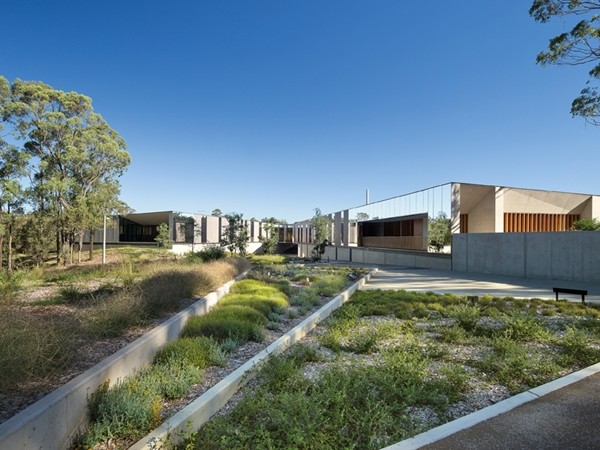
BVN architects used a combination of reflective stainless steel panels and mirror backed glazing intermittently throughout the PlantBank building at the Australian Botanic Garden in Mount Annan.
They chose to articulate the ecological nature of the building—PlantBank is a depository and conservatory for Australian native plant seeds— not through the lens of architectural naturalism but rather by creating a relationship with the landscape by reflecting it. Photography: John Gollings
2. Zoo Booth’ Healesville Sanctuary Kiosk, Victoria by TRANSPACE
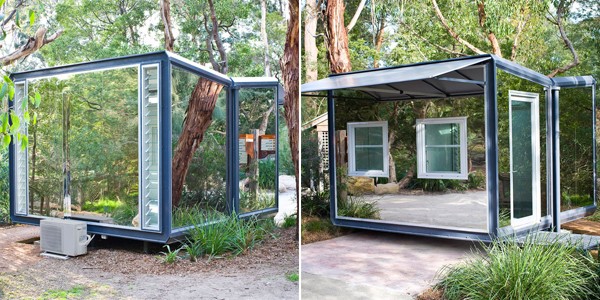
The Zoo Booth is an adaptation of the award winning DIY kit building design, Transportable Design 1 (TS1) by Transpace.
Transpace added grade 304, 1.2 mm stainless steel sheet cladding with a No. 8 mirror finish to their traditional kit room building system in order to provide a low visual impact for the kiosk in a natural setting.
3. The Cairns Botanic Gardens Visitors’ Centre by Charles Wright Architects
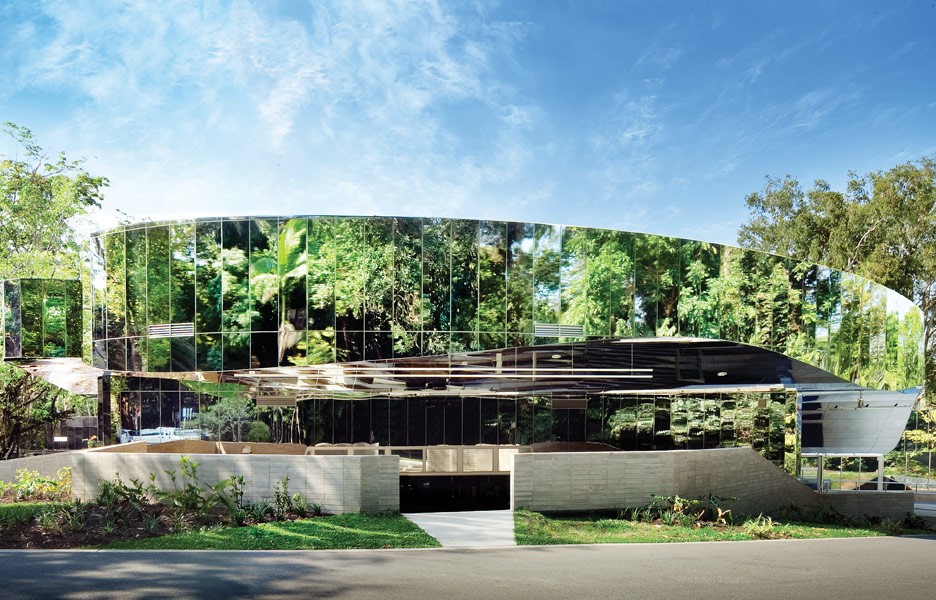
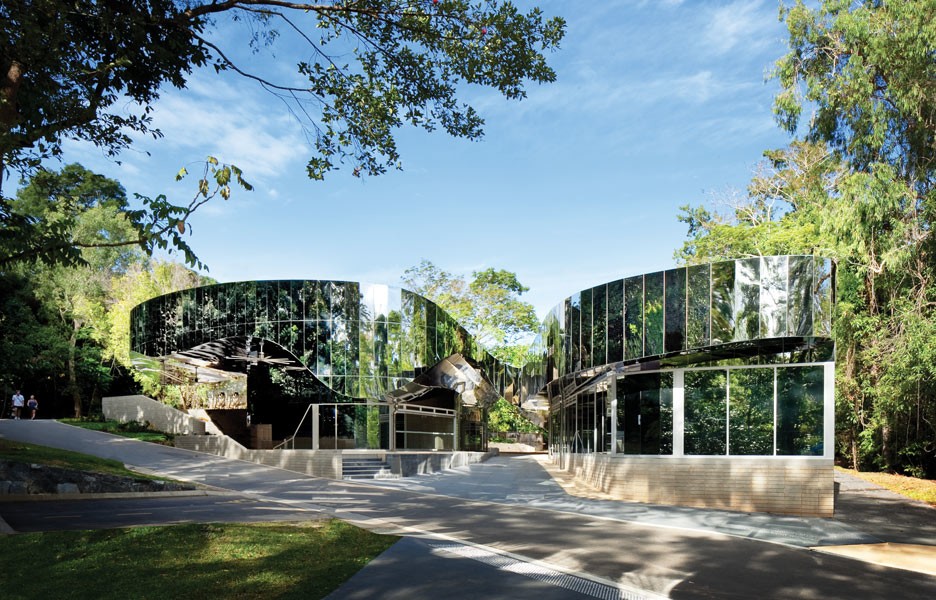
Charles Wright Architects dressed the undulating soffits and fascia of The Cairns Botanic Gardens Visitors’ Centre with stainless steel to create a kaleidoscopic affect. The panels are angled irregularly and reflect different elements of the surrounding landscape. The mirror visual devices are used to create a building that conspicuously celebrates nature whilst simultaneously camouflaging with it.
The angles also help address sun glare problems associated with mirrored façades especially in tropical climates. Photography is by Patrick Bingham Hall.
4. House WZ2, Germany by Bernd Zimmermann

German architect Bernd Zimmermann did the unthinkable when he replaced the façade of this 1950s south-west Germany house with stainless steel mirrored cladding.
While neighbours—who live in very close proximity—might not enjoy the unprecedented amount of glare reflecting back off the house, the Zimmermann design certainly transcends the conventional methods of dematerialisation—from some angles materials can’t be seen at all. Photography: Valentin Wormbs.
5. Mirror Houses, Italy by Peter Pichler
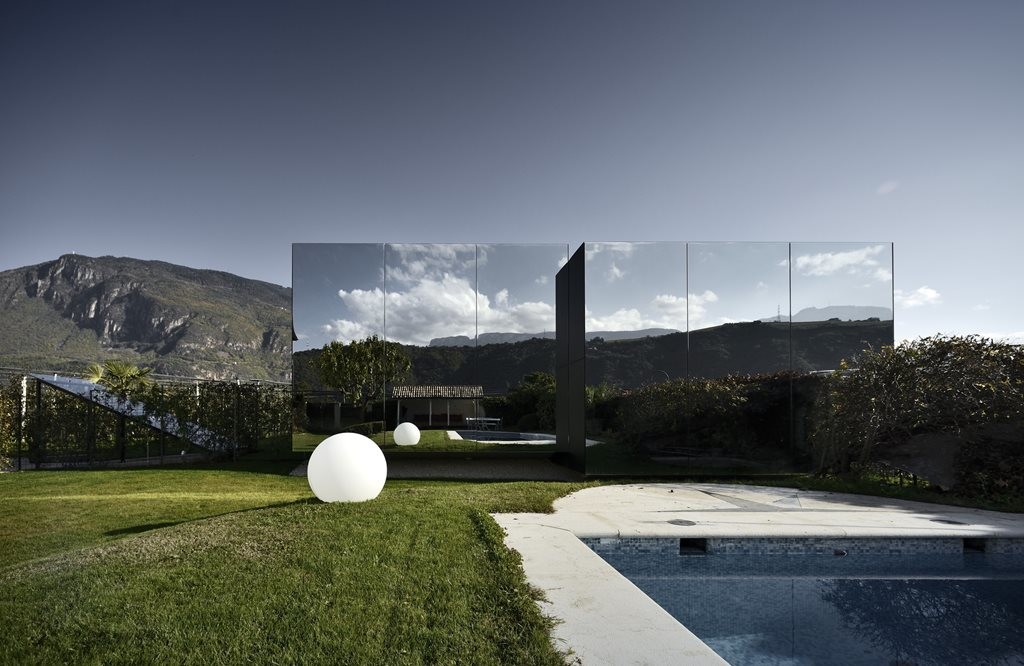
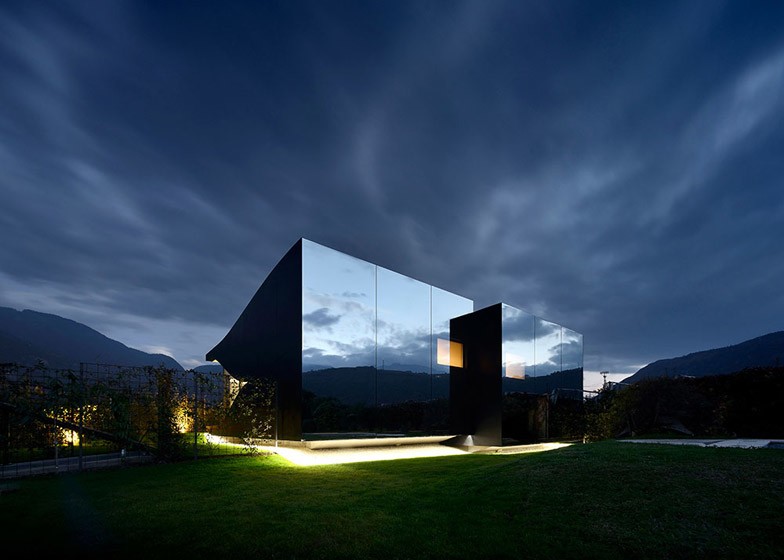
While the list of international projects that have used mirror cladding is extensive, Peter Pichler’s is unique in that he has gone to lengths to eliminate one of the drawbacks from using a reflective exterior wall—unwanted bird collisions.
Glare-reducing UV film was added to the mirror-clad western facades of the Mirror Houses to help prevent birds from colliding with the highly reflective surfaces.
The film reduces UV light and glare but maintains a clear reflection of the surrounding landscape and keeps the visual impact of the guesthouses minimal from the client’s own residence. Photography: Oskar Da Riz.

